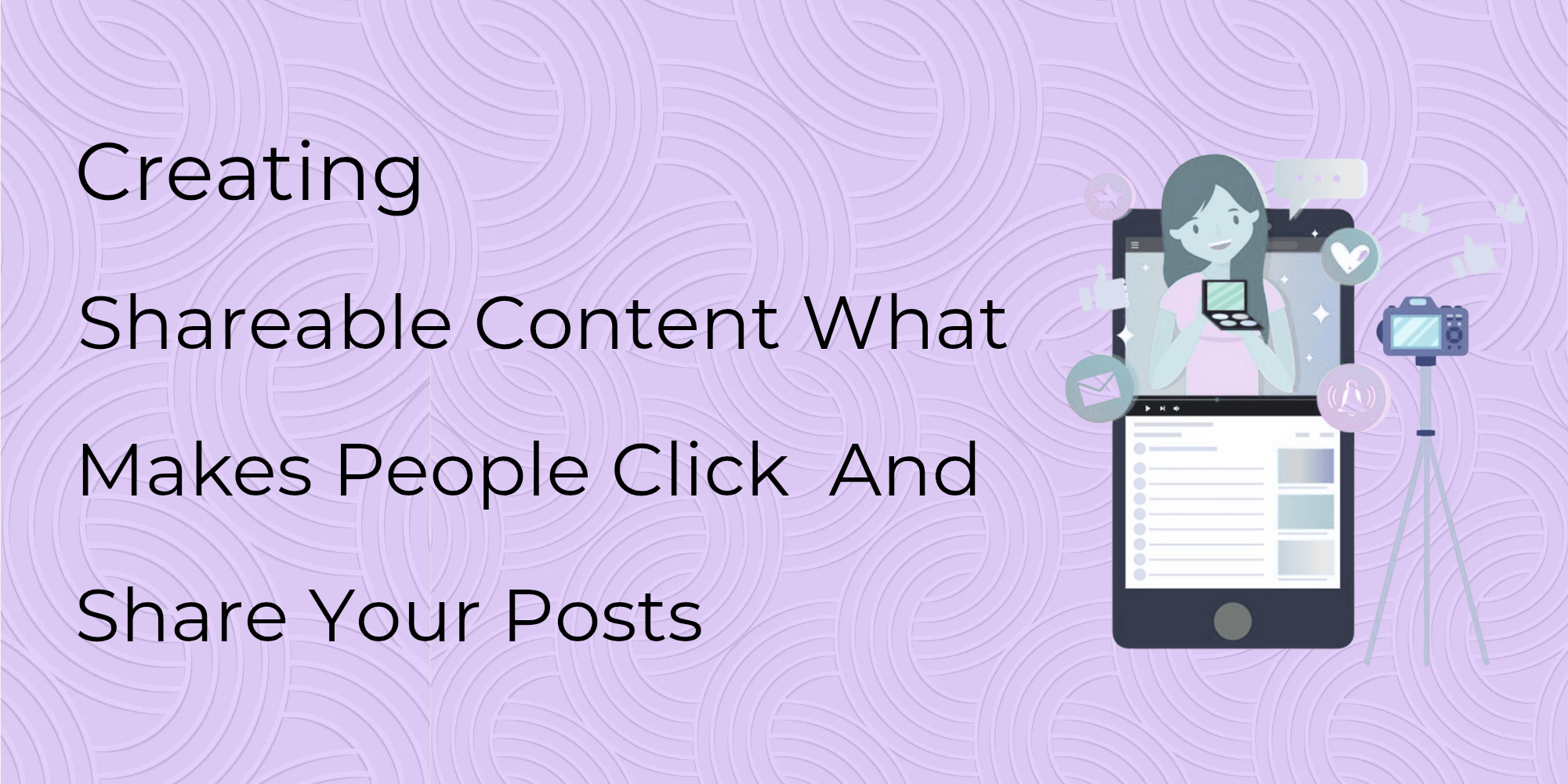It’s not enough to write a wonderful blog or post an amazing photo in this day and age of the digital world. It’s about creating content that goes viral—content that gets clicked, liked, shared, and discussed. How do you make your content stand out in a ocean of information? And more importantly, why should people share your content with their friends, family members, or followers?
Let’s demystify the psychology, strategy, and architecture of shareable content—what makes people share your posts and how you can use that insight to turbocharge your content’s visibility
- Why People Share
In order to understand why people share content, we first have to know why people are on social media. As per a study by the New York Times Customer Insight Group, people share content for five main reasons:
- To share valuable and interesting content with others
- To establish themselves to others (expression of identity)
- To develop and sustain relationships
- To feel more connected to the world (self-actualization)
- To support things or brands that matter to them
This indicates something important: Shareability is not about you, it’s about them.
- The Shareable Content Core Ingredients
The key ingredients that always result in shareable, click-worthy content are:
✅ Emotionally Engaging
Feelings override behavior, particularly online. Whether it’s a laugh, outrage, amazement, or inspiration—content that evokes powerful feelings gets passed around. Positive emotions (such as delight, amusement, and astonishment) are more likely to be shared than negative ones, according to research.
Examples:
- Tear-jerking tales (such as a dog rescuing its owner)
- Funny memes or spoofs
- Empowering quotes or comeback stories
•Visually Appealing
Humans are a visual species. Posts containing images, infographics, video, or GIFs do much better than text alone. A bold image assists in catching attention in crowded feeds and is often able to communicate your message quicker than language.
Examples:
- Instagrammable selfie-style pics
- Infographics full of data
- Short videos (Reels, TikToks, Shorts)
Tip: Make images mobile-friendly and have video subtitles for viewing in silence. - Value-Driven
People enjoy sharing content that is of value. Whether it is a how-to, a productivity hack, or news, valuable content adds to the credibility of the sharer as a useful resource.
Examples:
- “10 Tips for Working Remotely”
- “Free Tools Every Marketer Should Use”
- “Beginner’s Guide to Investing”
- Identity-Based or Relatable
Content that resonates with a person’s beliefs, challenges, sense of humor, or lifestyle inspires sharing because it is about who they are. People enjoy saying:
“This is SO me.”
“This reminds me of my friend.”
“I couldn’t agree more!”
Examples: - “Only introverts will understand this.”
- Memes about being a tired parent
- Posts about being a small business owner
- Short and Snackable
In the fast-scrolling world of social media, attention spans are short. The more concise your message, the better your chances of capturing interest and getting shared.
Examples: - 15-second videos
- Single-sentence captions with a punch
- Carousels with 3–5 tips
Tip: Cut the fluff. Keep the essence and keep it brief. - Calls to Action (CTAs)
People sometimes need a little push. A direct CTA such as “Share this with someone who needs to hear this” or “Tag a friend who does this” can really boost engagement.
Examples: - “Save this for later!”
- “Tag your bestie ????”
- “Hit share if you agree!”
- Types of Content That Gets Shared the Most
Let’s take a look at content formats that have been tested to go viral:
Memes
Humorous, lightweight, and frequently culturally relevant. Memes are sharable because they’re entertaining and create community through a common joke.
Infographics
They are both visually appealing and informative. People share them so they can seem intelligent and educate others.
Quotes
Brief, punchy, and emotionally charged. Inspirational or motivational quotes can spread like wildfire, particularly on channels like Instagram or Pinterest.
Short Videos
Thanks to Instagram Reels, TikTok, and YouTube Shorts, short-form video rules engagement. The best are amusing, informative, or strongly relatable.
Lists and How-Tos
Audiences are keen on bite-sized education. Lists such as “5 Mistakes to Avoid When…” or “3 Hacks to Save Time” are winners on all platforms. - Optimizing for Clicks
If one aspect of the puzzle is acquiring shares, making people click your content is the other. Here’s how you can drive click-through rates (CTR):
Headlines Matter
Your headline is your hook. It needs to be clear, specific, and curiosity-provoking.
Examples:
- “What Happened When I Stopped Using My Phone for 7 Days”
- “You’re Using LinkedIn Wrong—Here’s Why”
- “How This Freelancer Made $10k in One Month (No Ads)”
Tip: Differ by using numbers, bold adjectives, or questions.
Tease, Don’t Reveal
If you spill all the beans in the title or caption, no one will click. Instead, generate curiosity.
Example:
Instead of: “This is a guide to earning your first $100 online”
Try: “Here’s how I earned my first $100 online—most people miss using this trick…”
- Use Great Thumbnails
For blog posts and videos, a great thumbnail drives clicks. Use: - Faces with emotion
- Bold text overlays
- Vibrant, contrasting colors
- Platform-Specific Tips
Every platform behaves differently and follows a different algorithm. Adapt accordingly.
Facebook
- Emotionally driven storytelling
- Relatable videos, personal anecdotes
- Groups and communities increase reach
X (Twitter) - Threads for in-depth insights
- Hashtags to drive visibility
- Short, clever one-liners work
Instagram - Quality visuals are essential
- Carousels and Reels work better than static posts
- Short but value-packed captions
TikTok & Reels - Hook in the first 3 seconds
- Leverage trending audio for discovery
- Keep authentic and fast-paced
LinkedIn - Personal career stories or insights
- Don’t sound corporate—be human
- Carousels, polls, and thought leadership posts work well
● Types of Content That Get Shared the Most
These are some types of content that always work across platforms:
- Listicles
E.g., “7 Ways to Boost Productivity Without Burning Out” - Infographics
Great for stats, timelines, and breaking down complicated information. - Memes
Funny, on-trend, and bite-sized. - How-to Videos
Especially effective on YouTube, Instagram Reels, and TikTok. - Personal Stories
Vulnerable, real-life storytelling creates emotional bonds. - Interactive Content
Quizzes, polls, or “this or that” templates encourage engagement.
● Common Mistakes to Avoid
- Being Too Salesy
People share useful or funny content — not advertisements. - Ignoring Your Audience
Know who you’re speaking to. One-size-fits-all never works. - Inconsistent Branding
Baffling images or tone can undermine your message. - Low-Quality Visuals
Poor design and fuzzy images damage credibility and sharability. - Overcomplicating the Message
Cleverness loses to clarity. If they don’t get it quickly, they won’t share it.
Building shareable content isn’t about algorithm gaming — it’s about connecting with humanity. Best content makes a person stop, think, feel something, and want to spread that feeling.
Remember your audience’s needs, feelings, and identities with each post. In uncertainty, ask yourself:


